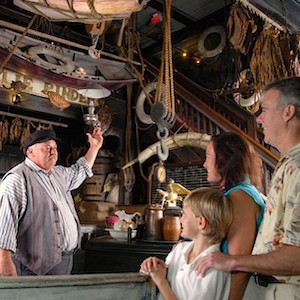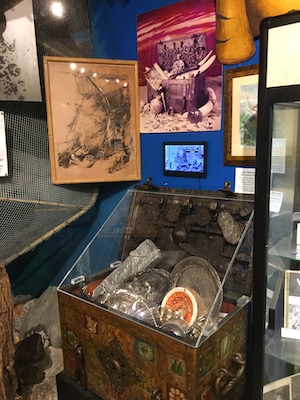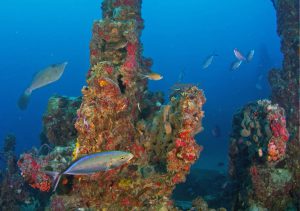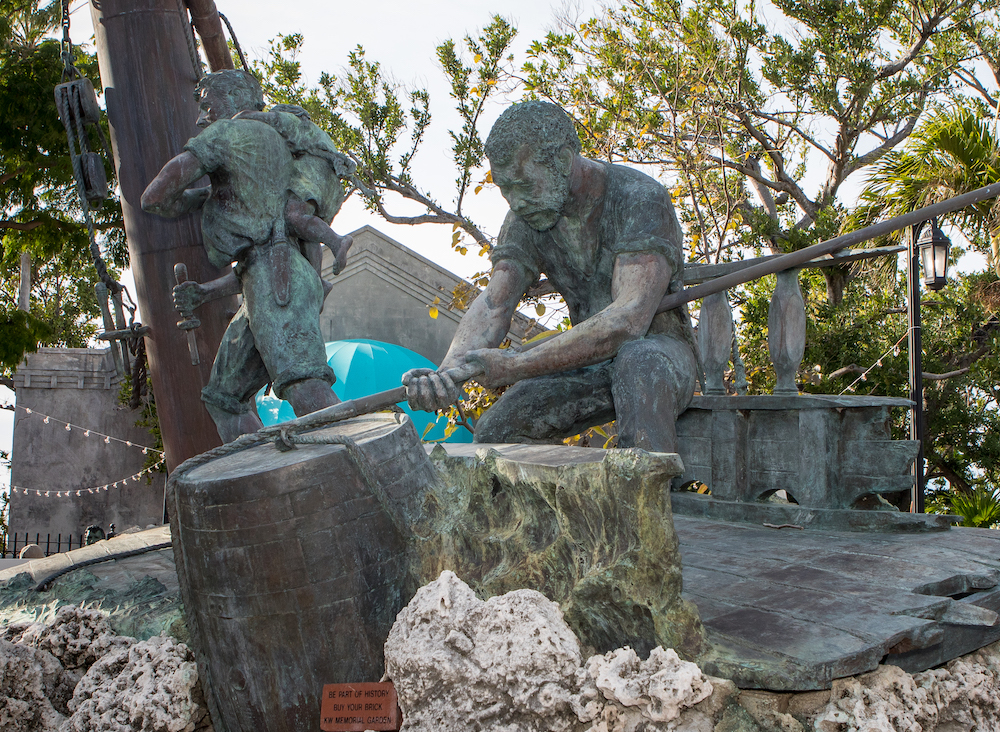Ever since the Florida Keys were settled two centuries ago, the island chain has been known for its residents’ adventurous seafaring spirit. Today, that spirit remains among the Keys’ most appealing attributes. And contemporary visitors can find it in museums and attractions, tales of sunken treasure and dive trips to famed shipwreck sites.

Costumed re-enactors tell the story of the Florida Keys wrecking industry at the Key West Shipwreck Treasure Museum. (Photo courtesy of Historic Tours of America)
Many early settlers in Islamorada and Key West were wreckers — salvaging goods from ships that sank along the continental United States’ only living coral barrier reef, which runs parallel to the Keys. While the wreckers’ strict code mandated rescuing crews and passengers first, they also profited from salvaged cargo. In the mid-1800s, wrecking made Key West the wealthiest city per capita in the U.S.
Keys visitors can relive that era at the Upper Keys’ Indian Key Historic State Park, a small island that was once a busy port established by wrecker Jacob Housman in the 1800s, or at the Key West Shipwreck Treasure Museum, featuring re-enactors and salvaged artifacts.
A century earlier, fleets of Spanish galleons regularly sailed past the Keys carrying goods and treasures from the New World back to Spain. Many sank in the area, including 13 ships from Spain’s 1733 fleet.
Among the galleons was La Capitana, the flagship of the 1733 fleet, which sank off the Upper Keys. In the late 1930s, pioneering diver Art McKee began salvaging the vessel’s remains — recovering cannons, silver and gold coins, weapons, navigational instruments and silver bars.

The History of Diving Museum in Islamorada contains a fascinating exhibit on Art McKee, called the father of modern treasure diving, and his discoveries in Upper Keys waters.
Dubbed the father of modern treasure diving, McKee also uncovered the sites of the Infante, Herrera, Chaves, San Pedro and San José. His exploits are chronicled in a remarkable exhibit at the Florida Keys History of Diving Museum in Islamorada.
The Keys’ most famous wreck is immortalized at Key West’s Mel Fisher Maritime Museum. The museum showcases artifacts and treasures from the Spanish galleon Nuestra Señora de Atocha, lost in a 1622 hurricane and discovered off Key West in 1985 by shipwreck salvager Mel Fisher. Items on display include gold chains, cannons, navigational instruments, coins and heavy silver bars.
Today’s adventurers can indulge their own seafaring spirit by diving the Keys’ Shipwreck Heritage Trail. Featuring nine wreck sites stretching from Key Largo to Key West, the trail was established by the Florida Keys National Marine Sanctuary to spotlight the island chain’s rich maritime history.
Its wrecks range from McKee’s San Pedro to modern cargo and military ships and artificial reefs. Among them is the Thunderbolt, intentionally sunk in 1986 some 4 miles south of Marathon in 120 feet of water.

Fish swim around a coral-encrusted gun turret on the artificial reef Spiegel Grove, lying off Key Largo in the Florida Keys National Marine Sanctuary, 20 years after the ship’s intentional sinking. (Photo by Frazier Nivens, Florida Keys News Bureau)
Three other significant vessels also beckon Keys divers. The 510-foot Spiegel Grove, the third-largest ship ever intentionally sunk to create a new reef, is positioned about 6 miles off Key Largo in 130 feet of water. It has attracted divers, fish and other marine life since its 2002 sinking.
The 210-foot freighter Adolphus Busch Senior lies in Lower Keys waters approximately 5 miles southwest of Big Pine Key. Divers have been exploring the artificial reef since it was sunk in 1998.
The second-largest vessel ever to be sunk as an artificial reef is the 523-foot General Hoyt S. Vandenberg, scuttled in 2009 about 7 miles off Key West. Its hull rests on sand at depths averaging 145 feet, but its superstructure rises to about 45 feet below the surface.
Only a few ships that sank in Florida Keys waters carried gold or other rich cargoes. But from Spanish galleons to modern-day artificial reefs, they all offer treasured adventures for divers.

